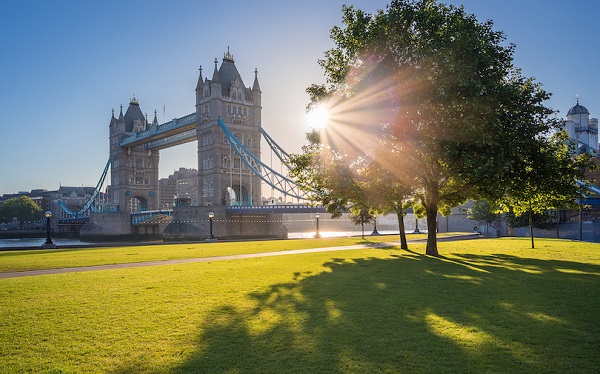Alberta
Three quarters of Albertans are double vaccinated. Province launches third booster shot.
Vaccine eligibility expands, milestone hit
More than 75 per cent of eligible Albertans are now fully immunized against COVID-19 while thousands more Albertans are now eligible for a third COVID-19 vaccine dose.
Starting Oct. 6, Albertans age 75 and older and First Nations, Inuit and Métis people age 65 and older can begin booking for a third dose at least six months after their second dose.
Acting on the recommendations of the Alberta Advisory Committee on Immunization, Alberta is one of the first provinces in Canada to offer third doses of vaccine to these age groups. Older Albertans, along with those who are immunocompromised or in seniors supportive living, are receiving third doses because of their increased risk of hospitalization, death or other severe outcomes from COVID-19.
Health officials will continue to monitor all emerging evidence on vaccine effectiveness across Canada and around the world.
“We are pleased to offer additional protection for those Albertans who are most at risk of serious illness from COVID-19. Getting fully vaccinated is not only important to help protect yourself and others, but is also vital to protecting our health-care system.”
“We know that COVID-19 can be especially dangerous for our older populations and continue to do everything we can to keep them safe. Over three-quarters of eligible Albertans are now fully immunized. I encourage everyone to think of their family, friends and neighbours and get fully vaccinated as soon as possible.”
“The data shows that seniors may experience waning immunity approximately six months after their second dose. A third dose will be beneficial for our elderly population to ensure they have the best protection from COVID-19 as we move through this fourth wave. At this time, the evidence does not support a need for additional doses for the general population, but we continue to monitor the data and will adapt as new evidence emerges.”
Double dose milestone hit
Currently, 75.1 per cent of eligible Albertans are fully vaccinated against COVID-19 after receiving two vaccine doses.
In addition, 84.5 per cent of eligible Albertans have received at least one dose. More than 500,000 first, second and third doses have been administered since Sept. 3.
All eligible Albertans are strongly encouraged to get fully vaccinated soon as possible to protect themselves, their families and their communities.
Albertans eligible for third doses
In addition to Albertans aged 75 and older, and First Nations, Métis and Inuit people aged 65 and older, third doses are available for seniors living in congregate care. These individuals are at the highest risk of severe outcomes and potential spread within congregate living sites, and will receive their doses on-site.
A number of immunocompromising conditions also qualify for an additional dose at least eight weeks after a second dose. For a full list, visit alberta.ca/vaccine.
Additional mRNA doses are also available to Albertans who are travelling to a jurisdiction that does not accept visitors who have been vaccinated with Covishield/AstraZeneca or mixed doses.
Anyone in the general population who receives a complete two-dose COVID-19 vaccine series can be confident that they have strong protection against severe illness and hospitalization due to COVID-19.
Booking a third-dose appointment
Eligible Albertans aged 75 and older and First Nations, Metis and Inuit persons living off-reserve can book appointments for third doses at participating pharmacies and physician clinics by using the booking system at alberta.ca/vaccine. Albertans can also call 811, participating pharmacies or participating physicians’ offices, or find a community pharmacy providing walk-in vaccinations.
Individuals aged 65 and older who live on a First Nations reserve will be able to access third doses through local public health clinics on-reserve.
If you are deemed ineligible due to your age, or six months has not passed since receiving your second dose, you will be asked to re-book when eligible.
Outdoor gathering restrictions
To reduce the spread of COVID-19, an updated public health measure will apply to all outdoor private social gatherings effective Oct. 6:
- Outdoor private social gatherings are limited to a maximum of 20 people, with two-metre physical distancing between households at all times. This is a decrease from the previous limit of 200 attendees.
- All other previously public health measures remain in place at this time.
- Additional information on all the public health measures is available at alberta.ca/covid19.
Alberta
Alberta judge sides with LGBT activists, allows ‘gender transitions’ for kids to continue

From LifeSiteNews
‘I think the court was in error,’ Alberta Premier Danielle Smith has said. ‘There will be irreparable harm to children who get sterilized.’
LGBT activists have won an injunction that prevents the Alberta government from restricting “gender transitions” for children.
On June 27, Alberta King’s Court Justice Allison Kuntz granted a temporary injunction against legislation that prohibited minors under the age of 16 from undergoing irreversible sex-change surgeries or taking puberty blockers.
“The evidence shows that singling out health care for gender diverse youth and making it subject to government control will cause irreparable harm to gender diverse youth by reinforcing the discrimination and prejudice that they are already subjected to,” Kuntz claimed in her judgment.
Kuntz further said that the legislation poses serious Charter issues which need to be worked through in court before the legislation could be enforced. Court dates for the arguments have yet to be set.
READ: Support for traditional family values surges in Alberta
Alberta’s new legislation, which was passed in December, amends the Health Act to “prohibit regulated health professionals from performing sex reassignment surgeries on minors.”
The legislation would also ban the “use of puberty blockers and hormone therapies for the treatment of gender dysphoria or gender incongruence” to kids 15 years of age and under “except for those who have already commenced treatment and would allow for minors aged 16 and 17 to choose to commence puberty blockers and hormone therapies for gender reassignment and affirmation purposes with parental, physician and psychologist approval.”
Just days after the legislation was passed, an LGBT activist group called Egale Canada, along with many other LGBT organizations, filed an injunction to block the bill.
In her ruling, Kuntz argued that Alberta’s legislation “will signal that there is something wrong with or suspect about having a gender identity that is different than the sex you were assigned at birth.”
She further claimed that preventing minors from making life-altering decisions could inflict emotional damage.
However, the province of Alberta argued that these damages are speculative and the process of gender-transitioning children is not supported by scientific evidence.
“I think the court was in error,” Alberta Premier Danielle Smith said on her Saturday radio show. “That’s part of the reason why we’re taking it to court. The court had said there will be irreparable harm if the law goes ahead. I feel the reverse. I feel there will be irreparable harm to children who get sterilized at the age of 10 years old – and so we want those kids to have their day in court.”
READ: Canadian doctors claim ‘Charter right’ to mutilate gender-confused children in Alberta
Overwhelming evidence shows that persons who undergo so-called “gender transitioning” procedures are more likely to commit suicide than those who are not given such irreversible surgeries. In addition to catering to a false reality that one’s sex can be changed, trans surgeries and drugs have been linked to permanent physical and psychological damage, including cardiovascular diseases, loss of bone density, cancer, strokes and blood clots, and infertility.
Meanwhile, a recent study on the side effects of “sex change” surgeries discovered that 81 percent of those who have undergone them in the past five years reported experiencing pain simply from normal movements in the weeks and months that followed, among many other negative side effects.
Alberta
Alberta Independence Seekers Take First Step: Citizen Initiative Application Approved, Notice of Initiative Petition Issued

Alberta’s Chief Electoral Officer, Gordon McClure, has issued a Notice of Initiative Petition.
This confirms a Citizen Initiative application has been received and the Chief Electoral Officer has determined the requirements of section 2(3) of the Citizen Initiative Act have been met.
Approved Initiative Petition Information
The approved citizen initiative application is for a policy proposal with the following proposed question:
Do you agree that Alberta should remain in Canada?
The Notice of Initiative Petition, application, and statement provided by the proponent are available on Elections Alberta’s website on the Current Initiatives Petition page.
As the application was received and approved prior to coming into force of Bill 54: Election Statutes Amendment Act, the Citizen Initiative process will follow requirements set out in the Citizen Initiative Act as of June 30, 2025.
Next Steps
- The proponent must appoint a chief financial officer within 30 days (by July 30, 2025).
- Once the 30-day publication period is complete and a chief financial officer has been appointed, Elections Alberta will:
- issue the citizen initiative petition,
- publish a notice on the Current Initiatives Petition page of our website indicating the petition has been issued, specifying the signing period dates, and the number of signatures required for a successful petition, and
- issue the citizen initiative petition signature sheets and witness affidavits. Signatures collected on other forms will not be accepted.
More information on the process, the status of the citizen initiative petition, financing rules, third party advertising rules, and frequently asked questions may be found on the Elections Alberta website.
Elections Alberta is an independent, non-partisan office of the Legislative Assembly of Alberta responsible for administering provincial elections, by-elections, and referendums.
-

 Brownstone Institute2 days ago
Brownstone Institute2 days agoFDA Exposed: Hundreds of Drugs Approved without Proof They Work
-

 Energy1 day ago
Energy1 day agoChina undermining American energy independence, report says
-

 Business1 day ago
Business1 day agoTrump on Canada tariff deadline: ‘We can do whatever we want’
-

 Automotive1 day ago
Automotive1 day agoElectric vehicle sales are falling hard in BC, and it is time to recognize reality.
-

 Business1 day ago
Business1 day agoEurope backs off greenwashing rules — Canada should take note
-

 Automotive1 day ago
Automotive1 day agoPower Struggle: Electric vehicles and reality
-

 Business8 hours ago
Business8 hours agoCanada Caves: Carney ditches digital services tax after criticism from Trump
-

 Bruce Dowbiggin8 hours ago
Bruce Dowbiggin8 hours agoThe Game That Let Canadians Forgive The Liberals — Again






